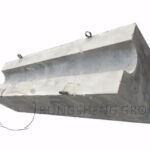A commonly used additive for unshaped refractory materials is water reducing agent. It can reduce water consumption without affecting the workability of monolithic refractory materials. Or it can increase the workability of unshaped refractory materials without affecting water consumption. Additives that combine the above two properties are called water-reducing agents, also known as dispersants.

The mechanism of action of water-reducing agent
-
Change the physical and chemical properties of powder
In the unshaped refractory material industry, solid particles (such as cement, clay, ultrafine powder, etc.) are usually used as dispersants, water is used as the dispersion medium, and additives are treated as solutes. In this system, the particles have a certain surface energy, which has the tendency to absorb electrolytes and surfactants from the solution to reduce the surface energy and cause the system to be in a stable state. It is the powder that selectively and preferentially adsorbs water-reducing agent ions, making it easy for water to disperse on its surface.
Due to this effect, the water-reducing agent is adsorbed on the interface of liquid-gas, liquid-solid, etc. Reduce the interface energy, destroy the agglomeration of particles, and reduce the frictional resistance of relative movement of particles, thereby improving the fluidity of the mud.
-
Change the electrical properties of the interface
When solid particles are stirred and coagulated with water, they have an attraction due to the opposite charge of the solid particles. Or the angular collision, adsorption and van der Waals force between particles caused by the thermal movement of solid particles in the solution cause a flocculation-like structure, wrapping a large amount of water. After the water-reducing agent is added, the hydrophobic groups of the water-reducing agent are directionally adsorbed on the surface of the particles, and the hydrophilic groups are directed toward the solution to form a monomolecular film or a multimolecular film. The particle-water system is placed in a relatively stable suspended state, the floc structure is dispersed, and free water is released. Because it can release free water in the condensed structure. Therefore, while maintaining the rheology (workability) of the castable, the unit water consumption can be reduced, or the workability can be improved without changing the unit water consumption, making the material easy to construct and shape.
-
Peptization of colloidal particles
The colloidal particles are transformed from the flocculation state to the sol state, thereby reducing the flow resistance of the mud and improving the fluidity. This can be achieved by adding appropriate electrolytes or water-reducing agents.
Therefore, the water-reducing agent of monolithic refractory materials is either an interface active substance or contains an interface active substance, or a substance that chemically interacts with the surface of the refractory material to change the surface properties. For the former category, the water-reducing agent must have both hydrophobic and hydrophilic groups.

Classification of water-reducing agents
Depends on the type of binder used. Water-reducing agents can be divided into water-reducing agents for clay bonding, cement bonding water-reducing agents, sol-gel bonding water-reducing agents, ultrafine powder bonding water-reducing agents, and phosphate and silicate bonding water-reducing agents.
Classified by function: ordinary type, retarding type, accelerating type, air-entraining type, etc.
Classified by chemical properties: anionic surfactants, cationic surfactants, nonionic surfactants, polymer surfactants, and inorganic salt surfactants.
Aluminate cement binding water-reducing agent
There are many water-reducing agents used in aluminate cement, but the following five categories are commonly used. Lignins, naphthalene series, water-soluble resins, salts of hydrocarbyl carboxylates and modifications and derivatives, alkanes, aromatic sulfonates, inorganic salts, and polymers.
In aluminate, cement refractory castables, MF, sodium lignin, alkyl sulfonate, etc. are added. It has a good water-reducing effect, but the retardation is heavy and affects the early strength. When tartaric acid, citric acid, and sodium tripolyphosphate are used alone, the water will bleed significantly, which can improve the compactness of the castable, but the water reduction effect is not great. Therefore, for aluminate cement castables, water-reducing agents should be used in combination as much as possible.

Water-reducing agent for low cement castables
In low-cement refractory castables, the commonly used admixtures are mainly high-efficiency water-reducing admixtures and dispersants. Its varieties include NNO, MF, NF, JN, SM, humic citric acid, tartaric acid and their salts, sodium tripolyphosphate, sodium hexametaphosphate boric acid, etc. The dosage is generally 0.03~1.0%. When selecting admixtures, they should match the ultrafine powder, and at the same time, the source of the material, ease of use, and cost should be considered. Generally speaking, the water-reducing and dispersing effects of organic admixtures are better than those of inorganic admixtures. In addition, kyanite and sillimanite are also added to make the low-cement refractory castable slightly expand at high temperatures.
However, in practice, water-reducing agents are very beneficial in improving the performance of castables. However, you should still pay attention to the following points when using it:
- Use standard dosage to avoid material separation and bubbles;
- Pay attention to the quality of the water-reducing agent to avoid affecting the performance of the castable;
- The post-mixing method should be used during use to improve the use effect and be easily adsorbed by cement;
- Stirring time: It is necessary to mix thoroughly and to introduce less air, and the two must be coordinated;
- After adding admixtures, the cement dosage and water consumption should be adjusted in time.








